Introduction
This is the first article from a new series intended for the companies that use third-party products with the same functions that can be found in TeamWox. We will show how to move to the TeamWox system from a particular product. The first of the systems that we are analyzing is an open system for ticket processing OTRS (Open-source Ticket Request System).
In this article we will discuss the main aspects of the OTRS systems and similar functions in TeamWox. Step by step you will learn how to work with requests and clients in TeamWox.
The Ticket System in OTRS
Any ticket and request management system is designed to organize technical support services. Such a system allows to have maximum informative communications with users and jointly solve arising problems.
OTRS is a cross-platform system. Its functionality is designed exclusively for working with requests through a Web-based interface.
Installing the system with its 4 base modules takes about 7 minutes (compare with the installation of TeamWox which takes about 5 minutes with its 20 basic modules). During installation, an administrator account is created and mail is configured. Part of the installation runs in a web-interface.
Ultimately the OTRS server takes about 850 MB of a hard disk. This is connected with the necessity to install the Apache server, CRON task system, MySQL database management system, Strawberry perl for Perl applications and finally OTRS.
Taking into account the number of used third-party solutions, it requires hiring a specialist to maintain the system. In this regard, the system maintenance costs increase.
In contrast to OTRS, the TeamWox system does not require third-party solutions. It is installed in 5 minutes, and further support of the system is implemented in the form of internal monitoring tools.
The sole purpose of OTRS is the registration and processing of clients' requests. Unlike OTRS, the requests system in TeamWox is only one useful tool of its rich toolset. In TeamWox, requests are interconnected with other modules enabling you to organize a more effective work of your team:
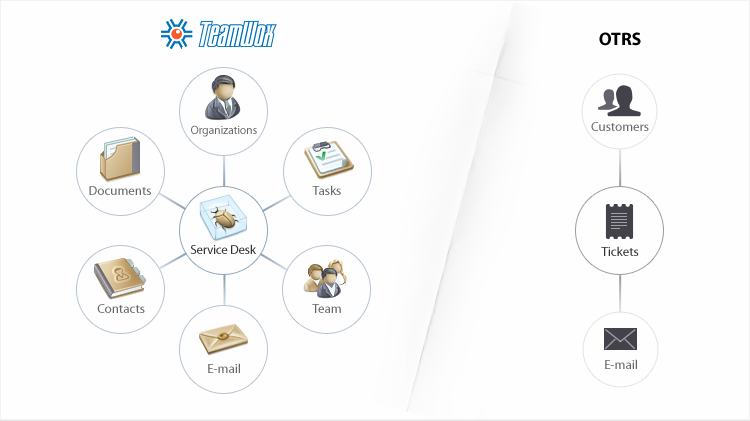
Technical Support Staff
- John Smith will be responsible for solving the problems described in requests;
- Julia Simple will handle incoming requests and appoint responsible specialists to work with them. Naturally, a user must be included in the technical support department.
In OTRS, Julia Simple must be associated with the role of Technical Support:
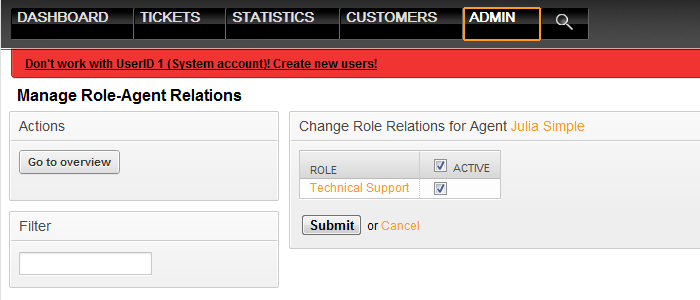
In the TeamWox groupware system, a users should be linked with the Technical Support department:
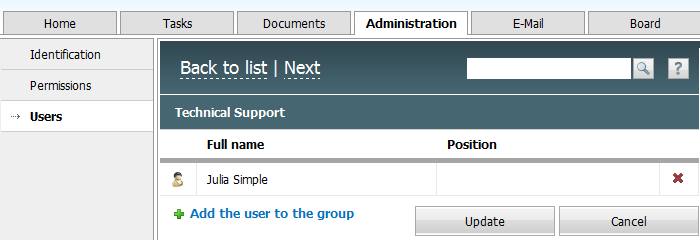
A Client Book
The main task of the request registration and processing system is to improve the quality of technical support services. Therefore, to control work with specific clients, the system use an electronic client book.
In OTRS it is implemented in the Customers section:
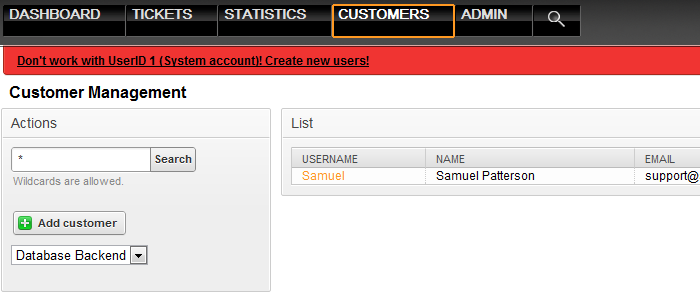
In TeamWox all information about clients is stored in the Organizations section:
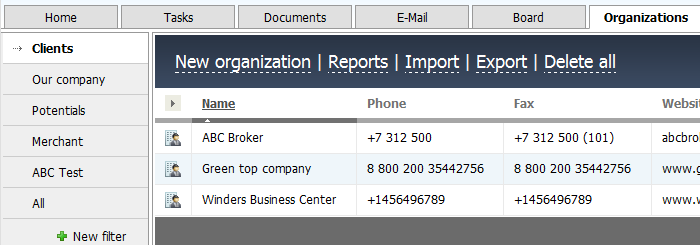
In addition, in TeamWox there you can access the history of applications all requests associated with a certain client:
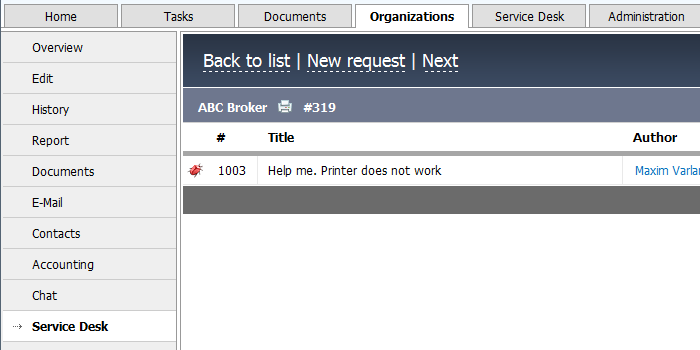
The TeamWox groupware includes special function fro importing customers to ensure rapid migration without a significant loss of time.
To transfer your customer base, you need to execute the SQL query from a Web-based interface in the OTRS administration and save the result as a CSV file:
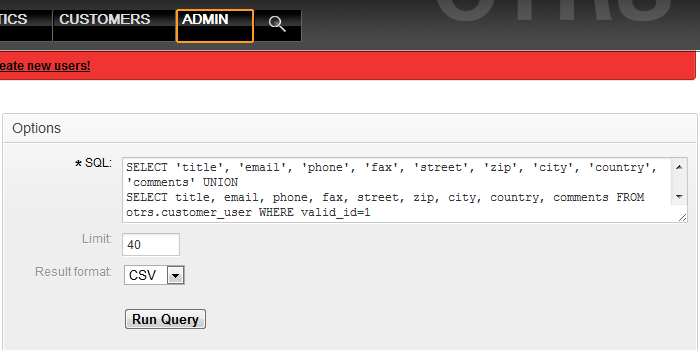
The OTRS system will generate a file admin_select.csv. This file must be specified as a source to import a list of organizations in TeamWox:
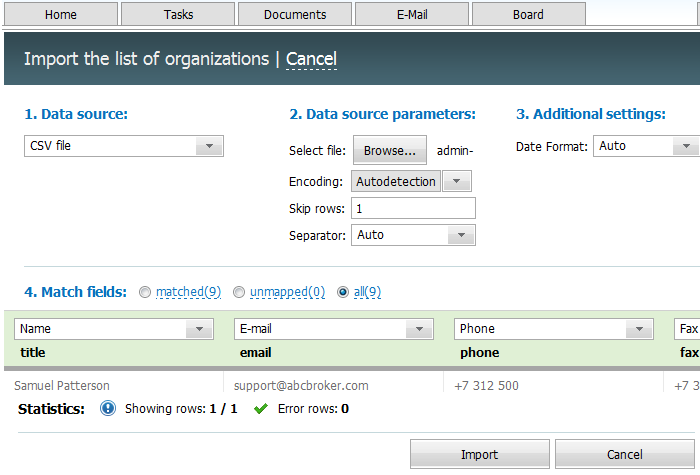
Registration and Processing of Requests
A request undergoes several stages:
- Receiving a request;
- Defining users to work with the request (responsible users);
- Discussion and solution of a client's problem;
- Completion of work with a request (changing its status to completed).
A request may arrive to the system in different ways. Let us consider these ways of request receiving in the two systems.
In OTRS, a request is received in the following ways:
- By transforming an email to a request: all incoming emails can be automatically linked to a group of incoming requests.
- Creating a request manually (based on an email or a phone call).
In TeamWox, requests are received in the following ways:
- From a company's website, using the Web integration;
- By linking an email to a new request;
- By linking a task to a new request;
- Creating a request manually.
The processes of request appearance are shown on the scheme below:
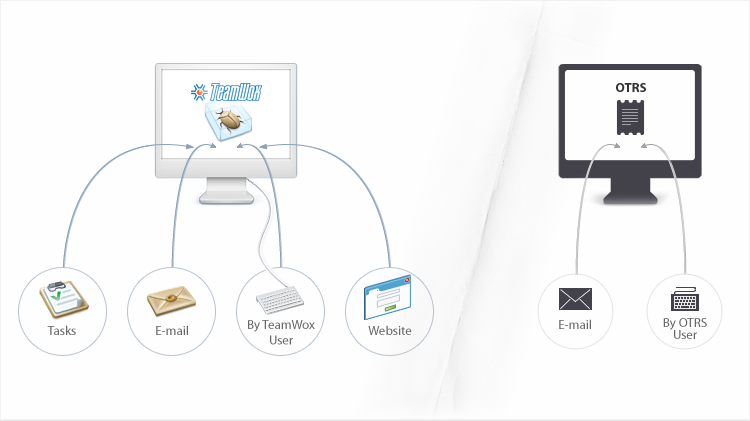
The TeamWox groupware offers more opportunities based on the expanded list of functions and interaction of requests with other collaboration tools. Moreover, in TeamWox requests can be used to organize the internal work in a company, without reference to the clients.
This allows you to easily move to the TeamWox system, and obtain even more opportunities to offer better technical support to your customers.
To determine a list of responsible employees, in OTRS you should use group setting and configuration of roles. This is due to the fact that OTRS is focused strictly on the technical support services.
In TeamWox, you can appoint users to work with a request, using the "Assign" command. This command opens a dialog for selecting users and groups:
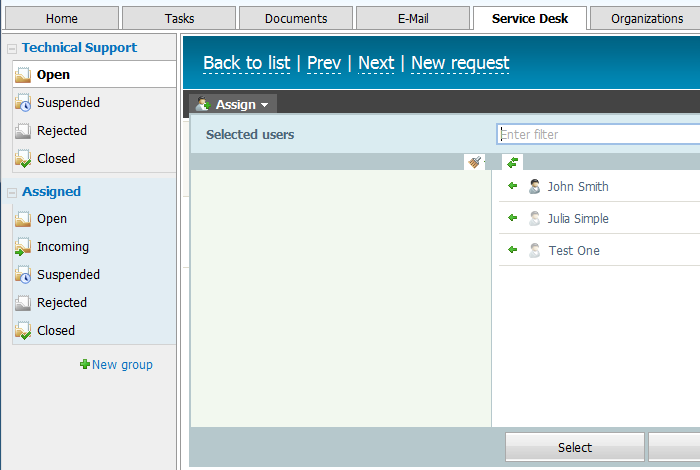
Also in TeamWox you can assign responsible users for the additional control over how a request is processed:
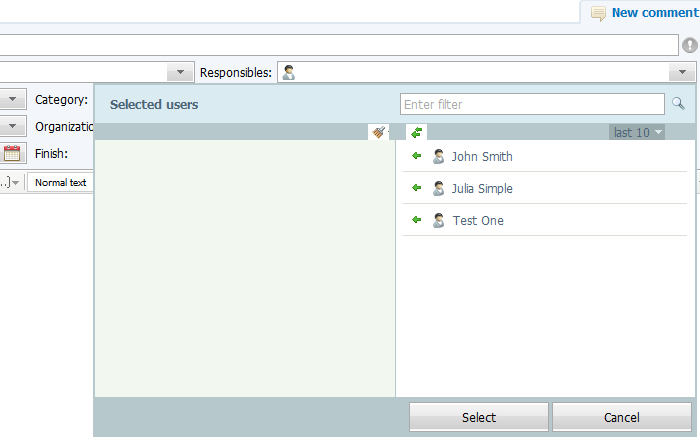
To discuss a current request, you can use comments in both systems. For internal discussions, a comment can be made private. In this case a client does not see it.
In OTRS, you must select the type of comment from the list:

In TeamWox, a comment is set to private by selecting a check box:
![]()
After a request has been processed, it acquires a certain status. In OTRS a processed request can have one of the following statuses:
- Closed (successful or not)
- Reminder (a simple reminder, expecting auto-shutdown)
- Closed - request processing is over.
- Completed - a user has solved the problem described in a request and completes it, after which the request author checks the result and either closes or restores it.
- Suspended - this status in TeamWox is the same as a reminder in OTRS. As a rule a request is suspended until there are sufficient resources and capacity to fulfill it.
- Rejected - if a request received from a client is considered irrelevant (for example an error has been already fixed) or a request will not be fulfilled, it is rejected.
The Public Part on the Company's Website
In TeamWox, the public part of the requests system is implemented as a separate integration on a company's website. This gives more security and protection against intruders, as well as the flexibility in customizing the interface.
In OTRS such integration is unavailable, and the system has a single interface for both technical support and clients.
In addition, the TeamWox system allows to integrate the public part of requests in different applications, for example in MetaTrader 5 Administrator:
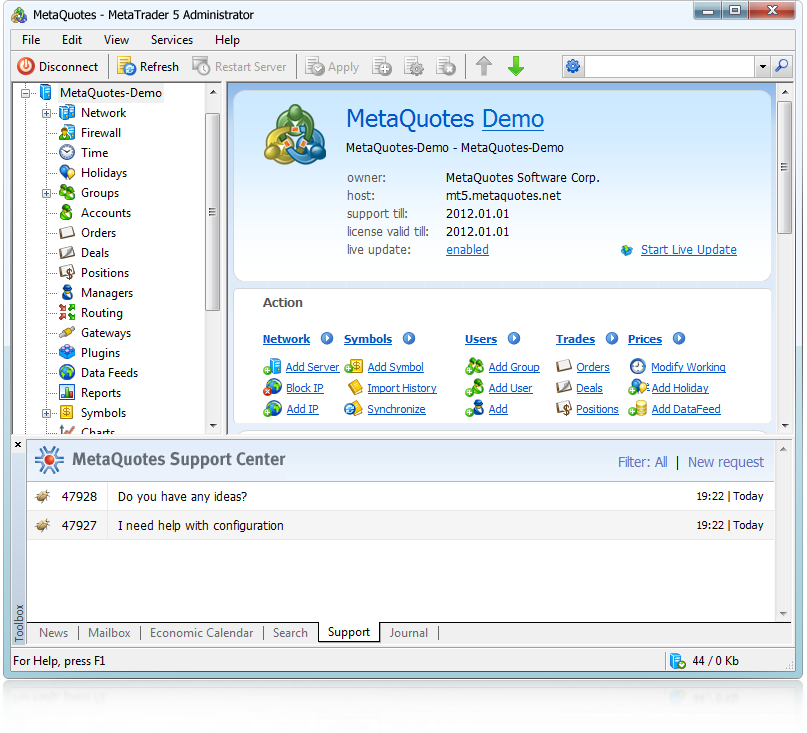
Migration from OTRS to TeamWox
To move from OTRS to TeamWox, you will need to do the following:
- Create users in TeamWox and set access permissions;
- Create clients like in OTRS;
- Configure the client part on your company's website;
- Start working with requests.
Conclusion
In this article we have reviewed the main points related to work with requests in TeamWox and OTRS.
At the same time, TeamWox is designed for organizing the work of the entire company, including task management, staff communications and work with clients and external organizations.
The Service Desk module in TeamWox is designed for convenient and efficient work with requests. This module implements the functionality similar to that of OTRS, namely, work with requests, monitoring and reporting, etc. In addition, the "Service Desk" module offers more useful features such as integration into a website, integration into applications, linking to tasks, etc.
All this, coupled with other wide features of the TeamWox groupware system, will help you to efficiently manage team work and client services in your company.
Related articles:
- TeamWox Groupware Setup Guide and Brief Training Course
- TeamWox Collaboration Software: Server Installation Guide
- FAQ
- Setting up the access to the TeamWox Collaboration System from the Internet
- A Legal SSL Certificate for TeamWox Collaboration System
- How to speed up TeamWox Groupware by storing components on different drives
- How to Install TeamWox Business Communicator on your PC
- Technical Customer Support with TeamViewer
- TeamWox Help
- Terms of delivery of the TeamWox Collaboration Software
- Reviews and Feedback
2011.03.21